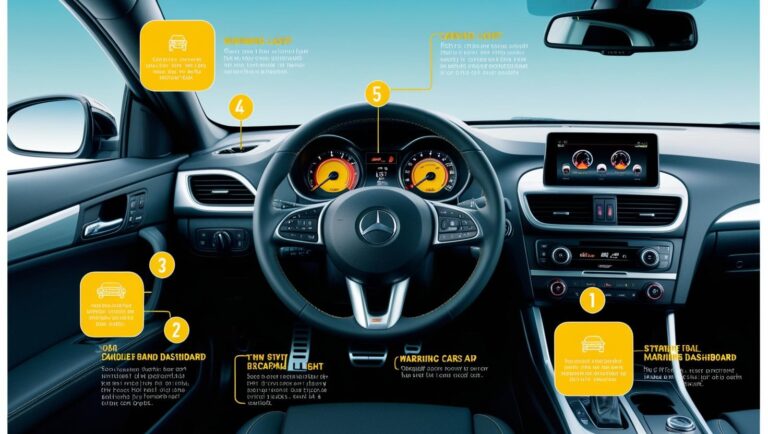In the ever-evolving landscape of automotive technology, modern vehicles are equipped with sophisticated systems designed to enhance the driving experience. Amidst the advanced features and digital interfaces, the car’s dashboard remains a critical communication tool between the vehicle and its driver. This multi-faceted interface is a hub of information, alerting drivers to the operational status of their vehicle through various symbols and warning lights. Understanding these indicators is essential for safe and efficient driving, ensuring that potential issues are addressed promptly and effectively. In this guide, we delve into the intricacies of your car’s dashboard, providing clarity on the symbols and warning lights that demand your attention.
Understanding the Symbols on Your Dashboard
The dashboard of a vehicle is a crucial component that combines both functionality and aesthetics. It is strategically designed to provide drivers with real-time information about vehicle performance, safety, and maintenance needs. Symbols on the dashboard can range from benign indicators of vehicle operation to critical alerts requiring immediate attention. For instance, the check engine light, often depicted as a stylized engine silhouette, signifies potential issues in the engine’s operation. This symbol is a catch-all warning that covers a range of malfunctions, from minor sensor errors to significant mechanical failures.
Another common symbol that appears on dashboards is the oil pressure warning light. Typically represented by an oil can icon, this symbol illuminates when there is a problem with the oil pressure in the engine. Low oil pressure can lead to severe engine damage if not addressed promptly, making it imperative for drivers to recognize and respond to this warning. The tire pressure monitoring system (TPMS) light is another critical symbol, often depicted as an exclamation point within a horseshoe-like shape. This light indicates that one or more tires are significantly under-inflated, which can affect vehicle handling and fuel efficiency.
While some symbols are universal across different vehicle brands, others may vary, especially with newer models that include more advanced technological features. As cars integrate more digital interfaces, symbols may also appear on digital screens rather than as traditional lights. It is essential for drivers to familiarize themselves with the symbols specific to their vehicle’s make and model, which can be found in the owner’s manual. Understanding these symbols aids in maintaining the vehicle’s health and optimizing driving safety.
Common Dashboard Warning Lights Explained
Dashboard warning lights are critical alerts that signify various issues with the vehicle’s systems. One of the most commonly recognized warning lights is the battery alert light, usually depicted as a battery icon. This light indicates a problem with the vehicle’s charging system, which could stem from a faulty alternator, battery, or wiring issue. Ignoring this warning could result in a dead battery and leave you stranded, emphasizing the need for timely diagnosis and repair.
Another essential warning light is the brake system alert, typically represented by a circle with an exclamation mark or the word “BRAKE.” This warning light may come on due to low brake fluid, worn brake pads, or an issue with the anti-lock braking system (ABS). The implications of a malfunctioning brake system are serious, potentially impacting the vehicle’s ability to stop effectively. Therefore, immediate attention from a professional mechanic is strongly advised when this light appears.
The engine temperature warning light, often symbolized by a thermometer submerged in liquid, is another critical indicator. This light warns of an overheating engine, which can lead to severe engine damage if not addressed promptly. Causes of engine overheating can include a malfunctioning thermostat, a broken water pump, or a leaking coolant system. Pulling over safely and allowing the engine to cool before seeking professional assistance is recommended if this light illuminates. By understanding these common dashboard warning lights, drivers can take proactive measures to ensure their vehicle’s safety and longevity.
As vehicles continue to advance with new technologies, the dashboard remains a pivotal component in vehicle communication. Familiarity with dashboard symbols and warning lights is an essential skill for all drivers, ensuring that they can respond appropriately to alerts and maintain the vehicle’s optimal performance. By understanding the language of your car’s dashboard, you not only enhance your driving experience but also contribute to road safety for yourself and others. Empowered with this knowledge, drivers can navigate the road with confidence, prepared to address any issues their vehicle may encounter.


















